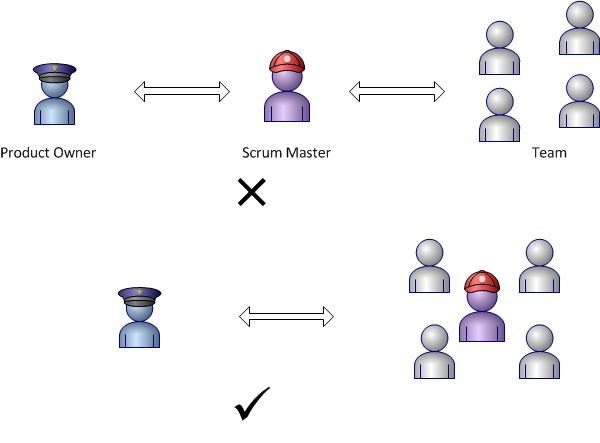3 Common Scrum Master Mistakes - Part I
April 18, 2012It is difficult for some Scrum Masters to stick to their servant leader role. Because of lack of support and limited experience, they fall back on what they know best – traditional management. Knowingly, or unknowingly, Scrum Masters keep falling into this trap. They start to behave more as project managers than as Scrum Masters.
Several symptoms indicate that the Scrum Master is struggling to let the Team self-organize. That person is acting more as a manager than as a Scrum Master. Three keys symptoms are
- the Scrum Master assigns tasks
- the Scrum Master makes decisions for the Team
- the Scrum Master acts as a go-between for the Team and the Product Owner
Scrum Master Assigns Tasks
It is Daily Scrum time. The Team gathers around the board, on time, and the Daily Scrum kicks off. On scrutiny, it becomes obvious that the Team members are talking to the Scrum Master during the Daily Scrum. They are “reporting” on what they did. A Team member has just reported what was done yesterday. That person does not have any tasks pending for today. Instead of picking up some task or self-organizing with the Team to pick up the next task, that person looks at the Scrum Master. The Scrum Master wisely nods and explains what to do next. The Daily Scrum continues.
The Scrum Master is working as a manager instead of a Scrum Master. This does not necessarily always happen during the Daily Scrum. Rather, after Team members finish their tasks, instead of working with the Team to pick up the next one, they go talk to the Scrum Master asking about what should be finished next. Just as it used to be in the good old days.
Scrum Master Makes Decisions On Behalf Of the Team
The Team needs to make a difficult decision during the Planning meeting, or during a Sprint. The discussion starts around the topic. Opinions start coming in from several directions. It looks like a normal Team discussion until the Scrum Master gives her verdict about the issue at hand. There is a pause in the discussion. The Team members look up to the Scrum Master, because of his or her strong experience in design and development. The discussion ends.
The Team has decided, though the decision was "spoon fed" to the Team by the Scrum Master. The Scrum Master is unknowingly training the Team to look up to him or her whenever they need to make a difficult decision. The Scrum Master has transformed into a manager, a lead architect, and a "decision maker".
Scrum Master Acts as a Shuttle
The Team has completed the Planning meeting and the Sprint has started. The Team starts to build the functionality it has just planned. The Team needs to talk to the Product Owner to get feedback and information concerning the features and the acceptance criteria. They have several questions for the Product Owner.
The Scrum Master communicates with the Team frequently. When the Team raises issues, the individual is "on it" - going around, locating the Product Owner, and asking the relevant questions - then getting back to the Team and informing them about the response given by the Product Owner. The Team seems happy; and gets back to work. So the cycle goes on.

This is a legacy of an activity-driven management culture, where managers invent work for themselves. They are accustomed to acting as a go-between for their Team and other stakeholders and teams.
We'll discuss the consequences of these mistakes and a couple of ideas to tackle these issues.
Learn more about the Scrum Master, Scrum and Agile in one of Scrum Master Certification courses.
